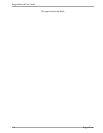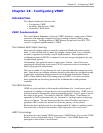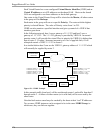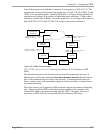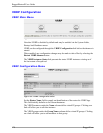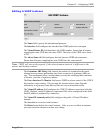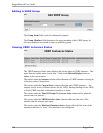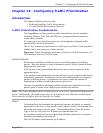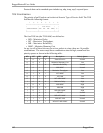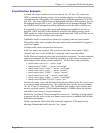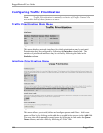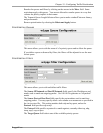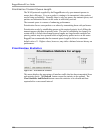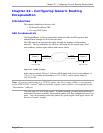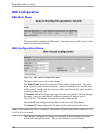
Chapter 19 - Configuring Traffic Prioritization
Chapter 19 - Configuring Traffic Prioritization
Introduction
This chapter familiarizes the user with:
• Enabling/Disabling Traffic Prioritization
• Viewing Traffic Prioritization Statistics
Traffic Prioritization Fundamentals
The RuggedRouter is able to prioritize traffic transmitted on network interfaces
(including Ethernet, T1E1, DSL and PPP ports), giving preferential treatment to
certain classes of traffic.
It is important to note that prioritization can only be applied to outbound traffic,
inbound traffic can not be prioritized.
The two key elements of prioritization are traffic queues and filters. Each prioritized
interface has its own unique set of these elements.
Please note: Traffic Prioritization works most effectively with WAN interfaces. For
LAN interfaces please see Traffic Control.
Priority Queues
Prioritization establishes a number of queues, each holding packets of differing
priority. When the interface is ready to transmit a packet it selects a packet from the
highest priority queue first.
If the interface is busy transmitting when packets arrive, they are enqueued in the
appropriate queue.
If the interface is not transmitting when the frame arrives to be enqueued, the frame is
immediately transmitted. Prioritization will not add additional delay to a stream of
packets of differing priority. Prioritization will simply reorder the sequence of
transmission of packets to send higher priority packets first.
Note that it is possible in indefinitely stall the transmission of packets from a lower
priority queue if a traffic from a higher queue saturates the interface.
Note: The router mandates that you must have at least a low, normal and high priority
queue. Additionally, the high queue must be of higher priority than the normal queue,
which must be of higher priority than the low queue.
Filters
For each packet to be transmitted on a prioritized interface, the packet is compared
against each of the filters on that interface until a match is found. The matching filter
directs the packet onto a specific queue. If no matching filter is found the packets
Type of Service (TOS) bits in its IP header are examined and used.
It is possible to match on source and destination IP address/mask pairs, source and
destination port numbers and protocols.
The 0.0.0.0/0 address/mask matches any IP address.
RuggedCom 181




